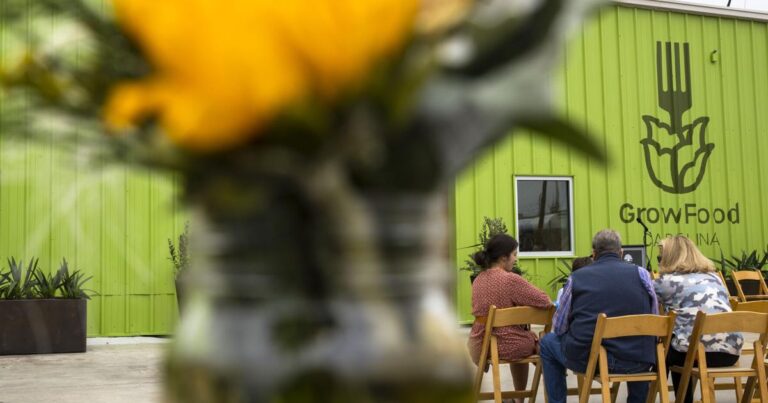
American farms and ranches are crucial to the future of our nation, not only because they’re a source of food but also because they improve our water quality, provide habitat for wildlife and even sequester carbon in the soil. Unfortunately, our country is losing its agricultural land, largely to development, at a disturbingly rapid pace. According to the American Farmland Trust’s “Farms Under Threat 2040” report, the United States lost about 2,000 acres of this land every day from 2001 through 2016.
“This report shows that, if this trend continues, another 18.4 million acres will be converted between 2016 and 2040 — an area nearly the size of South Carolina,” the report notes. During that same 15-year period, our state saw 280,700 acres of its agricultural land converted to residential use, about 5% of the total agricultural acreage.
There are important steps state and local governments should consider to encourage smarter development that has less impact on farms, to protect important agricultural lands, to steer new solar arrays toward built areas or disturbed or otherwise marginal lands, and to help those who want to farm.
But we also should celebrate a success story from our nonprofit sector. More than a decade ago, leaders with the Coastal Conservation League discussed what else could be done to help farmers in and around the rapidly developing Charleston area. They came up with a new entrepreneurial program, GrowFood Carolina, to act as sort of a nonprofit middleman between farmers and restaurants, grocery stores and individual consumers.
GrowFood’s doors opened in 2011, and it began buying produce from about a half-dozen farmers working on about 100 acres on Charleston County’s sea islands and reselling it, mostly to restaurants. The timing proved auspicious, as Charleston’s dining scene was continuing to flourish and the program and its modest warehouse were well-poised to take advantage of the durable “farm to table” movement through which restaurants seek ingredients from local farms.
The program sprouted over the following decade and now buys from 120 farmers who work about 7,000 acres of farmland across the state. GrowFood’s success is reflected in its recent move from Morrison Drive to a new building on Harmon Street. The new location has about four times more space than before, including room for its growing number of employees, currently at 13. It also features a full kitchen for cooking demonstrations.
“Ultimately, South Carolina has been one of the most affected states in the entire country when it came to farmland being lost to development,” GrowFood director Anthony Mirisciotta tells us. “The idea that came together years ago was that the best way to support our agricultural landscapes is by supporting the farmers and families that occupy those lands by keeping them in business and buying the food they produce. If we support local food and help build demand for local food, then those landscapes that we love won’t be covered in houses, highways and suburban sprawl.”
The GrowFood hub has bought and sold more than $13 million worth of tomatoes, greens, eggs and other local produce over the years, and it has returned 80%, more than $10 million, to the farmers themselves.
The average farm GrowFood works with is about 60 acres: Its niche is with the small to mid-size family farms. Not only does GrowFood purchase produce, but its staff also works with farmers to help them plan their production. It’s difficult to say how many acres of farmland GrowFood has helped conserve, but it has heard many words of thanks from the farmers themselves. “What we’ve seen happen is kids returning to the farm. Maybe they had gone off to another town or city but they’ve returned back,” Mr. Mirisciotta says. “Maybe what GrowFood has been able to do is make farming seem more viable for second-generation (farmers) to come back and make a living.”
This operation faced a major challenge during the pandemic. In early 2020, GrowFood sold about 75% of its produce to restaurants. When those had to close or scale back, GrowFood’s phones stopped ringing. But it quickly pivoted and sought grants to distribute local farmers’ food to neighborhoods in need. The Soil to Sustenance program is still going strong, and GrowFood is focusing more on nutritional education, partnering with Head Start locations to deliver food boxes at certain schools.
Today, restaurants have rebounded and buy about 65% of GrowFood’s produce while food access and nutrition programs make up about 12%. Much of the rest is sent to a growing network of other food hubs across South Carolina and North Carolina.
Nonprofit food hubs, no matter how successful they are, should not be relied on solely to preserve our important agricultural lands. This important conservation work also must remain a priority of elected leaders at all levels of government.
But GrowFood Carolina and other hubs should be celebrated for their important contribution to address this larger challenge, as well as for making it possible for more people to have more local, tasty dishes to eat. “The greatest thing we all can do in support of local food is speaking with our dollar,” Mr. Mirisciotta says. “At restaurants and farmers markets, ask questions: ‘What’s local?’ ‘Where your food is coming from?’ Understand when strawberries and kale are at their best.”
We should all appreciate our important role as consumers: We can act to help preserve important agricultural land simply by being mindful about the kinds of dishes we serve to ourselves, our families and our friends.